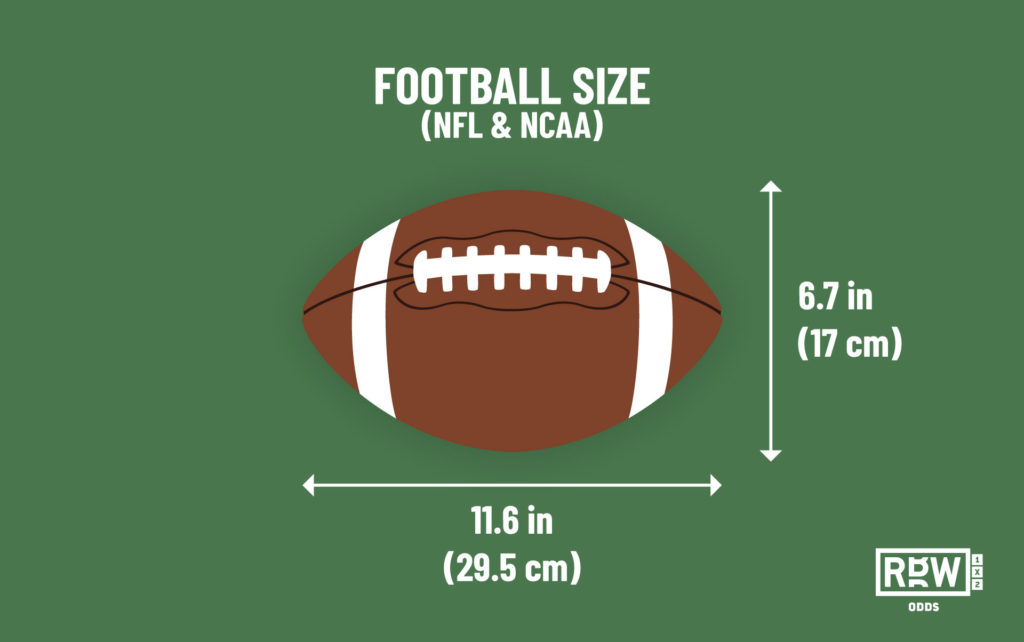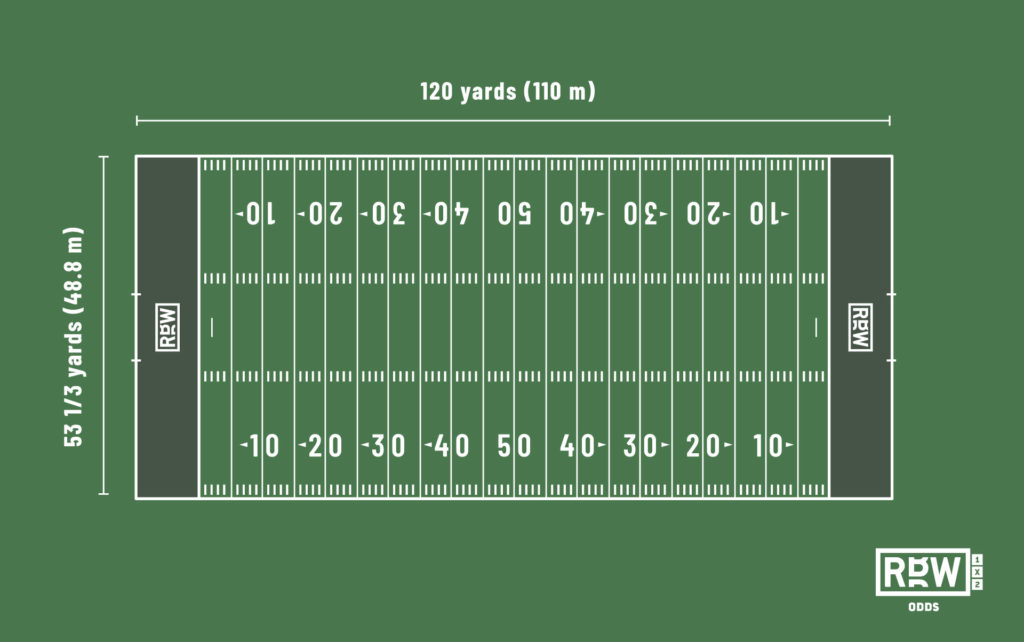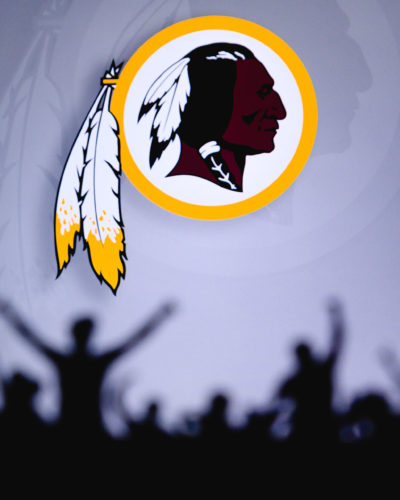American Football
Football, aka American football outside the US, is the most popular sport in the United States. NFL and NCAA are the two major leagues and generates around 9 billion US dollars combined annually. Around 1 million high school athletes and 70 000 college athletes play football in the United States every year.
On this page we will go through the history of football, the basic rules and where to find the best odds on your favorite football league.
- €150 casino bonus
- €150 odds bonus
- Where top dogs play
The correct term for American football is actually Gridiron football. American football originates from both soccer and rugby. The first game was played in 1869, between the two college teams Rutgers and Princeton. The rules were based on soccer rules.
In 1880 a major change of rules were made by Walter Camp, who is considered to be the “Father of American Football”. The rule change established the snap, the line of scrimmage, eleven-player teams, and the concept of downs. Eventually rule changes allowed the forward pass, established the neutral zone and specified the size and shape of the football.
The major leagues in American football
- NFL (National Football League)
- NCAA (National Collegiate Athletic Association)
- CFL (Canadian Football League)
The NFL is by far the most popular and well-known league among them all, but college football in the NCAA is also big business.
The rules
Teams and duration
Football is played by 2 teams of 11 players. Professional football games last for 60 minutes divided into 4 quarters. When the two first quarters have been played, the game goes to half time period.
The clock is stopped in between downs and the average NFL game lasts over three hours in total.
The football

The ball is oval shaped and made of cow hide leather. The football is inflated to 86-93 kPa and weighs 14-15 ounces (400-430 g). The length of the football in the NFL and the NCAA is 11.6 inches (29.5 cm) and the height is 6.7 inches (17 cm).
Football field sizes and lines

The football field measures 120 yards (110 m) by 53 ⅓ yards (48.8 m). The sidelines runs along the sides of the field. The end lines are marked along the ends of the field. Goal lines are marked 10 yards (9.1 m) inward from each end line. The area between the end line and goal line is called the end zone.
Goalposts
Goalposts are located at the center of the two end lines. The crossbar of the post is 10 feet (3 m) above the ground. The vertical uprights at the end of the crossbar is 18 feet 6 inches (5.64 m) apart in the NFL and the NCAA. The uprights are 35 feet (11 m) tall. Orange ribbons are normally placed at the tip of each upright to see wind strength and direction.
The football team
Every football team has an offensive and a defensive unit. The units are also known as offense and defense and take turns un the field depending on if the team has the possession of the ball. There is also a special teams unit that operates during kickoffs and field goal/PAT attempts.
Offense
The attacking team (offense) attempts to move the ball down the field by passing or running it. There are many different strategies to the game and every team have their own top-secret playbook. The quarterback leads the offense and directs the other players before each play.

Offensive line
The players in the offensive line’s role is to block players in the defensive line from tackling the ball carrier or sacking the quarterback. This task looks a little different depending on what type of play that is being played.
The center (C) in the offensive line snaps the ball to the quarterback and is also the leader of the offensive line. The center makes sure that the other linemen do their jobs. The guards (G) line up on both sides of the center with tackles (T) on the outside.
Receivers
Wide receivers (WR) and the tight ends (TE) are passing receivers. Wide receivers often line up far out from the offensive line. The main job for the wide receiver is to catch passes during passing plays, but may also play as decoys or blockers during running plays. Tight ends line up outside the the tackles in the offensive line. They can function both as receivers and as blockers depending on the play.
Offensive backfield
On the backfield we find the quarterback (QB), halfback/tailback (HB/TB) and fullback (FB). The quarterback is the leader of the offense unit and calls most of the plays. Plays may also be called by a coach. Befor each play the QB gather the offense for a huddle. He informs the rest of the players of the play before the team lines up. The quarterback is lined up right behind the center who snaps the ball on the right call. The quarterback then passes the ball or hands it over to another player in the backfield. He can also run the ball on his own.
Defense
The defending teams goal is to stop the offense’s attempts to move the ball. This is done by tackling the ball carrying offense player or by forcing turnovers with interceptions and fumbles.

Defensive line (DL)
The defensive line holds the front row positions in the defense unit. In the middle of the defensive line you will find the defensive tackles (DT) and on the outside the defensive ends (DE). The defensive line’s main role is to stop running games in the middle and on the outside, as well as putting pressure on the quarterback to move the ball.
Linebackers (LB)
The linebackers are found right behind the defensive line and works like a secondary defensive line. While the defensive line rushes in head-to-head with the offensive line, the linebackers have a few tenths of a second longer to read the game. Tackling rushing running backs in running games or stopping wide receivers and tight ends in passing games. The linebackers are the defensive leaders and calls the plays.
Defensive backfield
In the defensive backfield we find the cornerbacks (CB) and safeties (S). Cornerbacks are lined up on the outside, covering the offense team’s wide receivers. The safeties are lined up behind the cornerbacks but on the inside. Safeties are the last line of defense and are divided into free safeties (FS) and strong safeties (SS).
Special teams
The special teams unit is used for kicking plays. Such as when the team tries to execute field goal attempts (FG), kickoffs and punts.
During field goal attempts and PAT (point-after-touchdown) there are three specific positions. The placekicker (K or PK), holder (H) and long snapper (LS). The long snapper snaps the football to the holder. The holder catches the ball and holds in position for the kicker.
The player on the receiving team who catches the ball is called kickoff returner (KR).
During punt plays there are four special teams positions. The punter (P), long snapper, upback and gunner. The long snapper snaps the football to the punter. The punter catches the ball, drops and kicks it in mid-air. Gunners line up on the outside and races down the field to tackle the punt returner (PR) who catches the punt. Upbacks line up close to the punter to provide additional protection.
| Football position abbreviations |
|||
| Offense | Defense | ||
| C | Center | DT | Defensive tackle |
| G | Guard | DE | Defensive end |
| T | Tackle | LB | Linebacker |
| WR | Wide receiver | CB | Cornerback |
| TE | Tight end | S | Safety |
| QB | Quarterback | FS | Free saftey |
| HB | Halfback | SS | Strong safety |
| TB | Tailback | ||
| FB | Fullback | ||
Scoring in football
There are multiple ways to score in football. The touchdown (TD) gives 6 points and is the most valuable scoring play in American football. If the football is moved into or caught in the opposing team’s end zone. Right after a touchdown is scored the scoring team attempts for extra points.
Point-after-touchdown (PAT)
A PAT is attempted from the 2 or 3 yard line, depending on the level of play. If the football is kicked through the goal posts during a PAT attempt it is worth 1 point. This is typically called extra point. If it is scored with a touchdown it is worth 2 points. This is typically called a two-point conversion.
Field goal (FG)
Field goals are worth 3 points. A field goal is scored when the ball is kicked through the goal posts of the defensive team.
Safety
A safety is scored when the ball carrying player is tackled in its own end zone. It is worth 2 points and are awarded to the defense.
The course of the football game
Before the game starts there is a coin toss and the winner chooses whether to receive or kick off the ball. After kickoff the ball is received by the receiving team who will then try to move the ball as far down the opposing teams field as possible. The play ends when the ball carrier is tackled, runs out-of-bounds the ball hits the ground. Where the kickoff play ends is where the kicking team will start their first offensive play with first down.
Downs
The offense team is given a series of four downs (play attempts). If they advances 10 yards or more within the four downs, they get a new set of four downs. If they fail to advance 10 yards, the football is turned over to the defense teams possession. The teams then switches their offense/defense units.
If the offense reaches their fourth down they will usually punt the ball, so the other team is forced to begin their drive far down the field. If the offense are in field goal range on the forth down, they might attempt to score a field goal instead.
The “chain crew”, keeps track of both the downs and the distance measurements with the help of two poles connected with a chain. The length of the chain is equal to the 10 yards the offense needs to advance during the 4 downs. If you are watching the game on TV, usually a yellow line is digitally displaying the first down line.
The dimensions of an American football field is 120 yards (110 m) by 53 ⅓ yards (48.8 m).
The total playing time is 60 minutes (4 x 15 mins), but the total duration of a match is approximately 3 hours.
